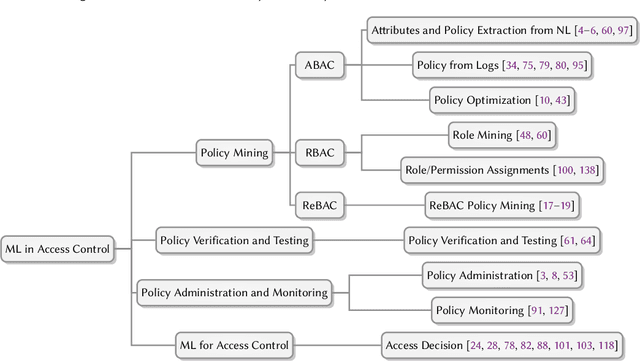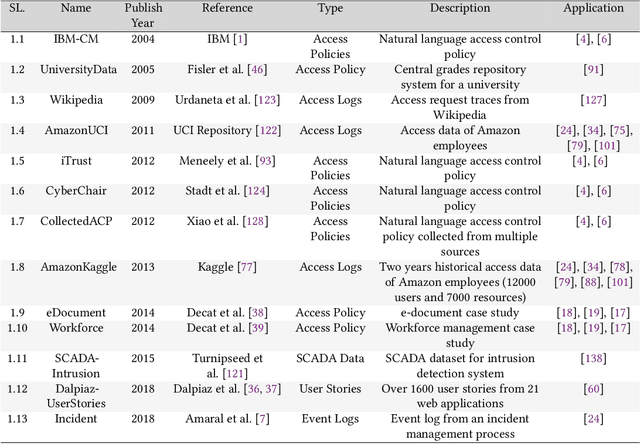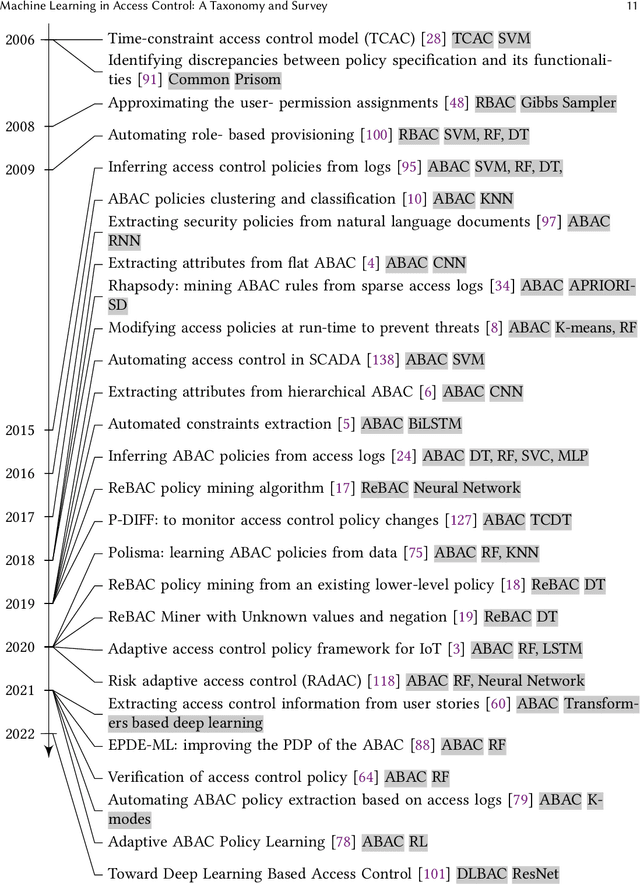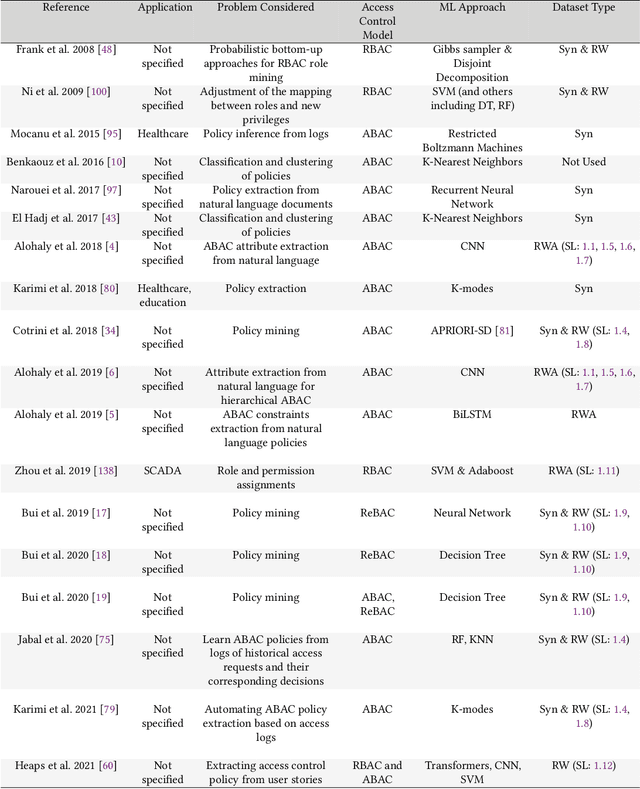Ravi Sandhu
Machine Learning in Access Control: A Taxonomy and Survey
Jul 04, 2022



Abstract:An increasing body of work has recognized the importance of exploiting machine learning (ML) advancements to address the need for efficient automation in extracting access control attributes, policy mining, policy verification, access decisions, etc. In this work, we survey and summarize various ML approaches to solve different access control problems. We propose a novel taxonomy of the ML model's application in the access control domain. We highlight current limitations and open challenges such as lack of public real-world datasets, administration of ML-based access control systems, understanding a black-box ML model's decision, etc., and enumerate future research directions.
Toward Deep Learning Based Access Control
Mar 28, 2022Abstract:A common trait of current access control approaches is the challenging need to engineer abstract and intuitive access control models. This entails designing access control information in the form of roles (RBAC), attributes (ABAC), or relationships (ReBAC) as the case may be, and subsequently, designing access control rules. This framework has its benefits but has significant limitations in the context of modern systems that are dynamic, complex, and large-scale, due to which it is difficult to maintain an accurate access control state in the system for a human administrator. This paper proposes Deep Learning Based Access Control (DLBAC) by leveraging significant advances in deep learning technology as a potential solution to this problem. We envision that DLBAC could complement and, in the long-term, has the potential to even replace, classical access control models with a neural network that reduces the burden of access control model engineering and updates. Without loss of generality, we conduct a thorough investigation of a candidate DLBAC model, called DLBAC_alpha, using both real-world and synthetic datasets. We demonstrate the feasibility of the proposed approach by addressing issues related to accuracy, generalization, and explainability. We also discuss challenges and future research directions.
 Add to Chrome
Add to Chrome Add to Firefox
Add to Firefox Add to Edge
Add to Edge